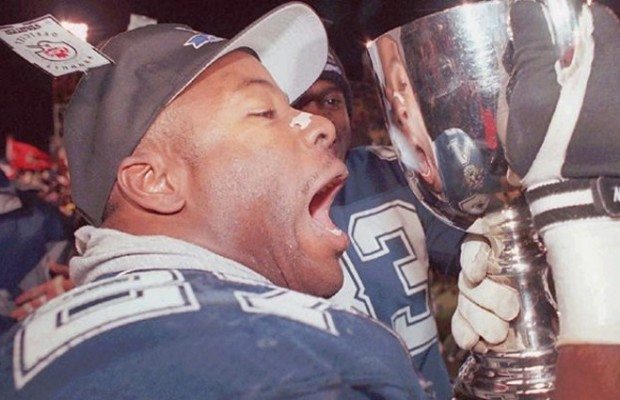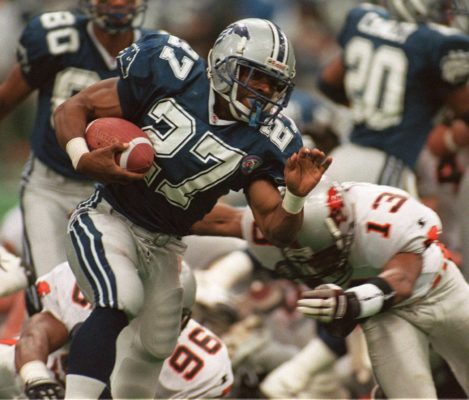Wild Stallions – How a Team From Baltimore Rocked the Canadian Football League Forever

In an effort to sell Canadian football to American fans, the CFL printed up thousands of promotional booklets in 1995 titled FIRST & TEN FROM THE FIFTY-FIVE: CANADIAN FOOTBALL EXPLAINED. It’s 21 pages full of everything a newbie fan would need to know: the in-game differences, both obvious and subtle; information on every franchise, both home and abroad; and histories of the league and the Grey Cup. As the media relations director for the Sacramento/San Antonio franchise, Tim McDowd lived this crash course in CFL football, as did many of his stateside colleagues.
“It’s still football at the end of the day, and I think that that’s what we learned: focus on the football, focus on trying to get the community to know the players, let the players become the face of the franchise,” he says. “We fought this perception that the CFL was minor league, that it’s the second tier.”
Still, despite all that preparation, McDowd concedes that “teaching Canadian football league rules to Texas football fans was an uphill battle.”
It doesn’t help that the pamphlet stresses words like “product” and “brand,” like the result of some overeager marketing executive, but the gist of the pocket guide is to convey the sense that not only are American and Canadian football not that dissimilar, but that it’s those differences that give the CFL a more exciting sport with higher scoring and unique rhythms – “a fast-paced, sizzling brand of football which is taking North America by storm,” as it reads.
On the back of that program is a motion-blurred shot of Mike Pringle, perhaps the greatest running back in the history of the CFL. At 5-foot-9 and out of Cal State Fullerton, Pringle was cut by the Atlanta Falcons during the 1991 preseason and signed with the CFL’s Edmonton Eskimos, but they released him after three unimpressive games. He spent the rest of 1992 with the World League’s Sacramento Surge, a team most notable for featuring defensive tackle/future wrestling star Bill Goldberg. When they folded, Pringle followed the franchise to the CFL and played one season for the newly minted Gold Miners, gaining 366 yards before signing with the Baltimore franchise before the 1994 season.
The rest is Canadian football history. Pringle rushed for a league-record 1,972 yards, a mark that stood until he broke it in 1998 and became the first (and still only) CFL player to eclipse 2,000 rushing yards in a season. Playing under legendary coach Don Matthews, Pringle became a nimble and bruising back, with a long stride that gained every inch humanly allotted to his gait. He was more Walter Payton than Emmitt Smith – still the only two professional football players to surpass his career mark of 16,425 rushing yards. In a league that was almost entirely dictated by passing, Pringle redefined the very idea of a CFL running back. Flutie won the Most Outstanding Player Award that year, but Pringle had become a bona fide star.
Even though it ended in heartbreak, the 1994 season was more than Pringle and the rest of the Stallions could have ever expected. Baltimore was a city that had football ripped from his heart in the predawn hours of March 29, 1984, when, under cover of darkness and deceit, Colts owner Robert Irsay quietly moved the Colts to Indianapolis. For more than 10 years, Baltimore was without pro football, and then a Virginia businessman named Jim Speros invested millions of his money to not only bring a franchise to Baltimore but to also renovate old Memorial Stadium.
